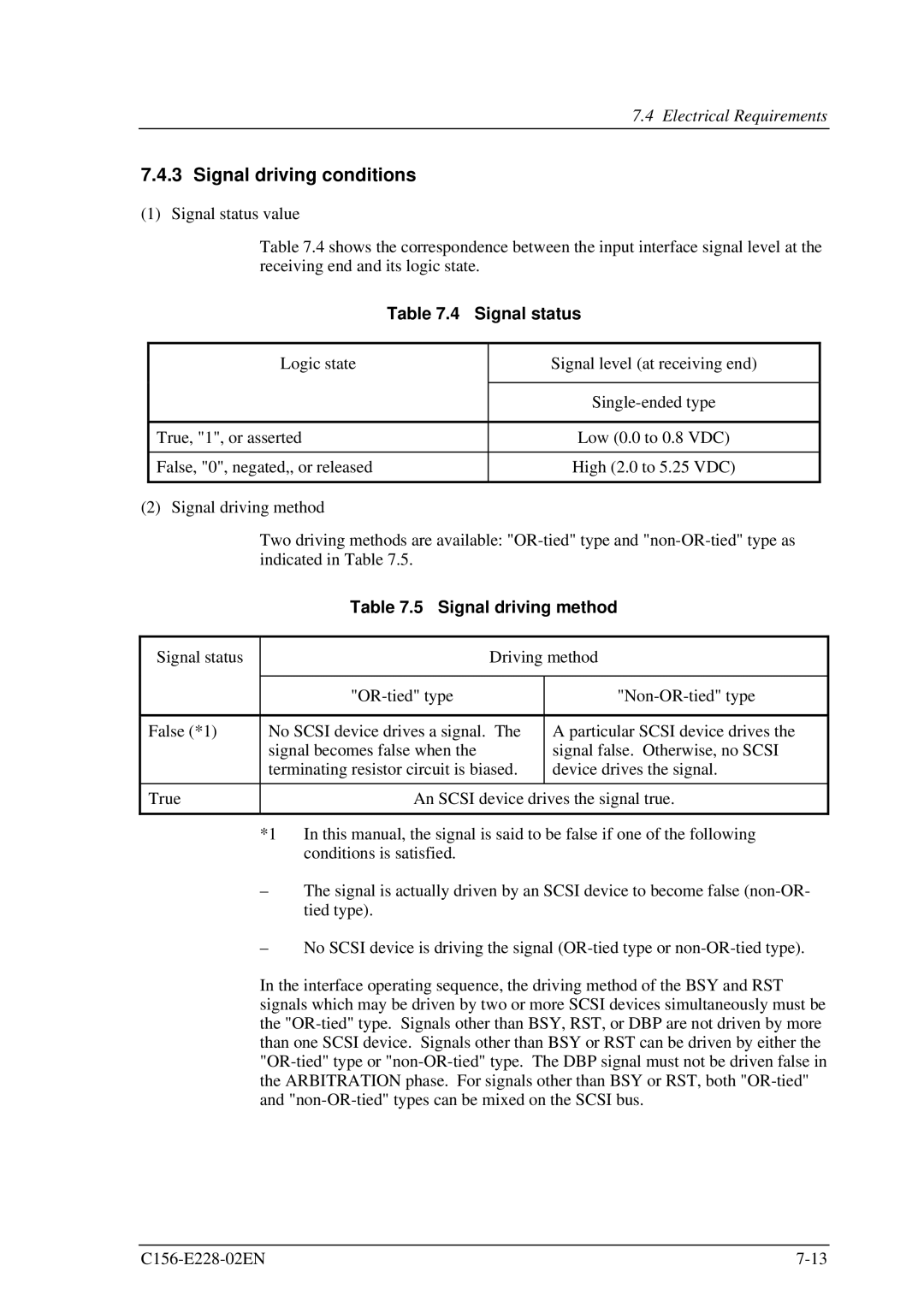
7.4 Electrical Requirements
7.4.3 Signal driving conditions
(1) Signal status value
Table 7.4 shows the correspondence between the input interface signal level at the receiving end and its logic state.
| Table 7.4 | Signal status | |
|
|
|
|
| Logic state |
| Signal level (at receiving end) |
|
|
|
|
|
|
| |
|
|
|
|
| True, "1", or asserted |
| Low (0.0 to 0.8 VDC) |
|
|
|
|
| False, "0", negated,, or released |
| High (2.0 to 5.25 VDC) |
|
|
|
|
(2) Signal driving method |
|
| |
Two driving methods are available:
Table 7.5 Signal driving method
Signal status |
|
| Driving method | |
|
|
|
|
|
|
|
| ||
|
|
|
| |
False (*1) | No SCSI device drives a signal. | The | A particular SCSI device drives the | |
| signal becomes false when the |
| signal false. Otherwise, no SCSI | |
| terminating resistor circuit is biased. | device drives the signal. | ||
|
|
|
| |
True |
| An SCSI device drives the signal true. | ||
|
|
| ||
| *1 | In this manual, the signal is said to be false if one of the following | ||
|
| conditions is satisfied. |
|
|
–The signal is actually driven by an SCSI device to become false
–No SCSI device is driving the signal
In the interface operating sequence, the driving method of the BSY and RST signals which may be driven by two or more SCSI devices simultaneously must be the
